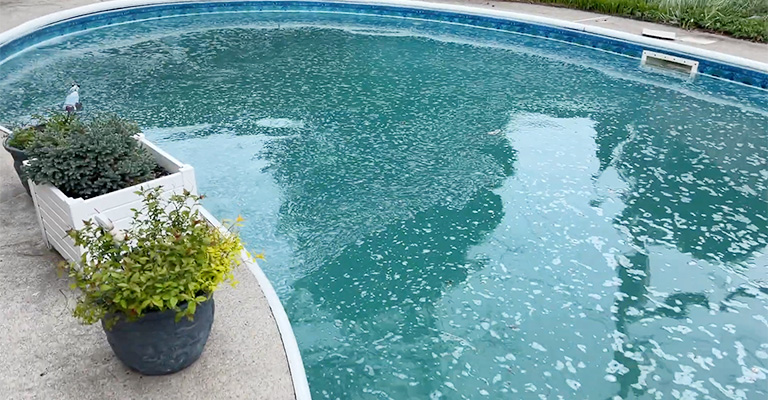Picture this: you’ve thoroughly cleaned your swimming pool, ensuring crystal-clear water for a refreshing swim.
To maintain its pristine condition, you decide to add some algaecide, a common pool chemical used to prevent algae growth.
However, instead of the expected results, you notice an unusual phenomenon—the once-clear water is now mysteriously foamy. What could have caused this unexpected foaming? Is it a cause for concern?
It is common for the foam to occur when your water is well maintained, and you add a pool opening kit. If the pool does not have algae to destroy, the algaecide in the kit will produce some foam if nothing is present to kill it.
A springtime algaecide uses surfactants to function, and these molecules can react to cause froth with agitation. All you need is patience to deal with this cause. Algaecide breaks down and consumes itself over time.
Understanding The Cause Of Pool Water Foaming After Algaecide
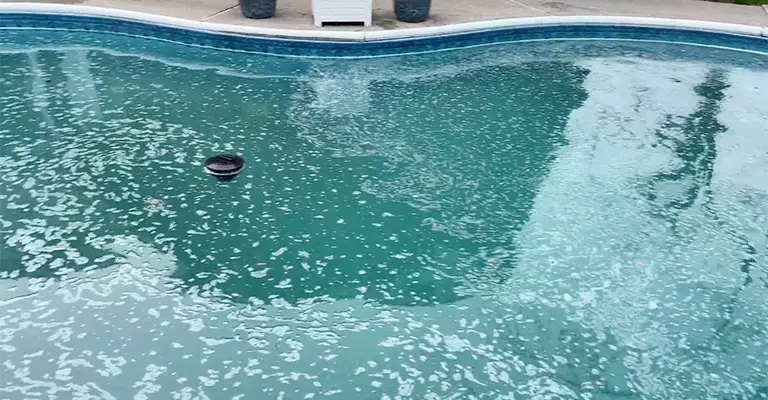
Many things can cause foam or froth in a pool. The calcium levels in the water may be too low, the polymer-based chemicals (aka algaecides) are at high levels, or there is an air leak in the pool’s system.
There is even a possibility that it’s a combination of these things. What is the best way for a pool owner to find out which one is the problem so they can fix it?
1. Ineffective Algae Treatments
A pool that has been mishandled can become foamy when algaecide treatments have been applied. A large amount of copper- or silver-based algaecides can lead to foamy pool water if too much is used.
There is usually not a great deal of foaming caused by chemical levels. Some thin froth may form when using these chemicals, which can generally be resolved by trying a different variety of algaecides.
Better quality products may reduce foaming; for instance, to quickly minimize foam, shock the pool with chlorine.
2. Lack Of Calcium
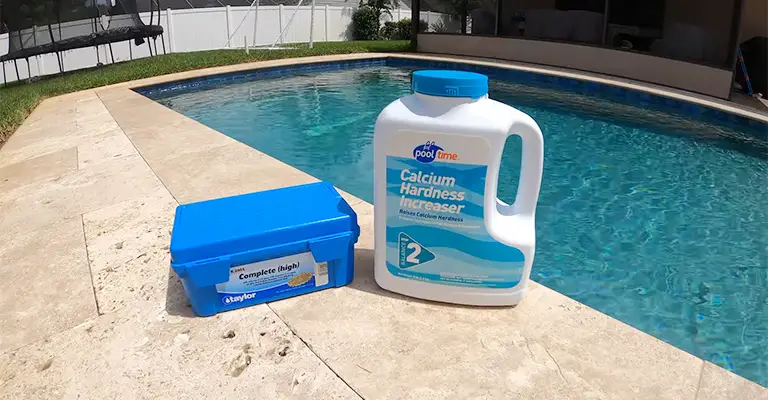
Alternatively, if that doesn’t resolve the issue, calcium deficiency might be the cause. A pool owner can increase calcium hardness if the water does not have enough calcium to prevent foam from forming or increasing.
3. Lotions And Oils In The Water
Getting into a swimming pool wearing lotions or oils can cause residue from those products to land on the surface.
The pool can also be polluted with residue from hair care products such as mousse and hair spray, as well as deodorant, makeup, and body lotions.
Swimming and splashing can agitate the oils and lotions in the water and cause them to foam. Using waterproof products can help swimmers avoid foaming.
4. Air Flow Issue
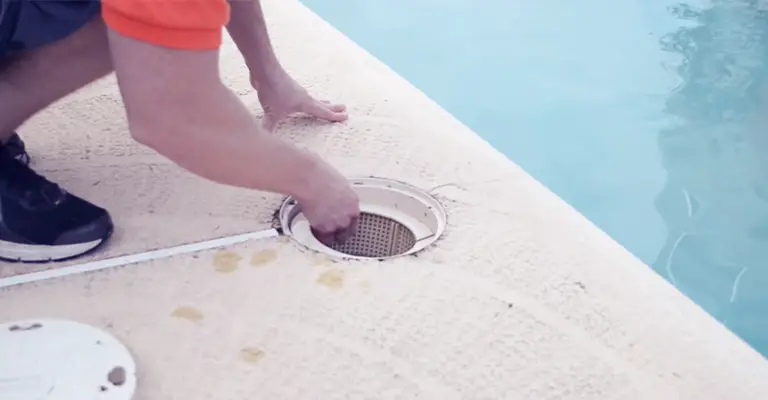
There may be an issue with airflow in the return lines that causes the foam. A leaky air system could cause a great deal of foaming on the pool water and result in an unhealthy environment in the pool.
In such a situation, the air leak should be addressed as soon as possible. The water level in the skimmer can be used to determine whether an airflow issue is at fault by checking to see if the skimmer is absorbing any air.
5. Plumbing Fittings
Following that, we will assess the plumbing fittings. Additionally, you should examine the pump strainer lid and strainer O-ring for cracks. It may be time to call a pool service repair company if there is a possible air leak.
6. A Combination Of Causes
It is often the case that many factors lead to a foamy pool. When there is insufficient algae treatment combined with air in the water return line, foamy pool water results.
Water also becomes foamy if algaecides are used in the pool, but a clogged filter prevents the chemicals from reaching the algae.
Is It Safe To Swim In A Pool With Little Foam?
You can swim in the pool if your sanitizer is testing correctly on your home test kit (1-3 ppm of chlorine, for example).
You may want to take a water sample to your pool care professional for laboratory analysis to determine the cause and fix the problem.
How To Get Rid Of Pool Foam?
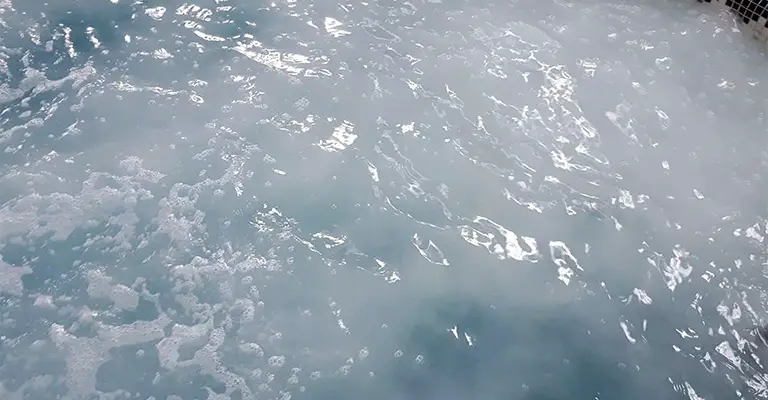
If you want to get rid of pool foam, your method will depend on its cause. Usually, algaecide will completely dissolve into the water after a few days. Therefore, if you notice bubbling, just allow time for it to completely dissolve.
If you skim the foam off the pool surface, you can speed up the process. Several ways can be used to remove pool foam, including:
- Testing the chemicals using test strips will ensure they are in balance.
- Assess your pool’s pH and alkalinity levels to see if they need to be adjusted. pH should measure between 7.4 and 7.6, and alkalinity should be from 100 to 150 parts per million.
- You may shock the pool with 1 pound per 10,000 gallons of water if the remedies mentioned above don’t work.
- In the end, you could add anti-foam chemicals to the water as a last resort. As well as, if you are in a hurry, this is the best solution for getting rid of the foam.
Tips For Preventing Pool Foam
- It may not be popular, but it can help prevent foam in the pool if swimmers take a shower before swimming.
- It is also important to maintain a hardness level between 200 and 400 parts per million (ppm) in the water to prevent problems. You may find the following tips helpful in preventing pool foam:
- Do not use algaecides that contain copper or silver. Be careful not to overuse it and check the product description for “non-foaming”.
- Regularly check the feeder lines to make sure they are not contaminated with air.
How is Pool Foam Different from Air Bubbles?
In a natural environment, bubbles appear underwater and get pushed up to the surface when jets are running.
If you’re dealing with foam, how can you tell it from bubbles? During periods of no jets being run, foam can form patches or thick layers, which float on the surface.
Similarly, “thickness” plays an important role here. Despite their lightweight and airy nature, bubbles have little surface tension.
Unlike bubbles, foam is dense, thick, and doesn’t pop as quickly because it is not air-based but rather composed of organic materials.
The Bottom Line
Call the expert pool maintenance team anytime you have a problem. We can remove pool foam for you, plus handle any pool problems you have.

